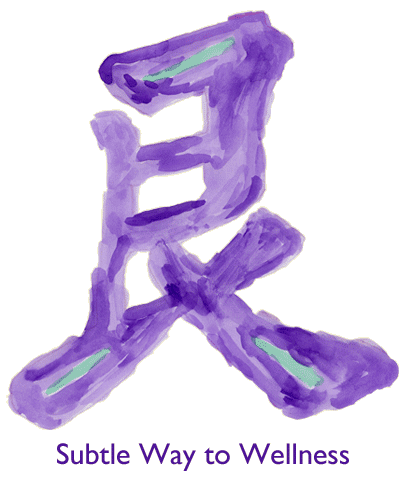Chinese Medicine dietary therapy is an important branch of Chinese medicine. It goes beyond vitamins and minerals and the biochemical nature of foods. It is focused more on the energetic properties of food in order to correct internal imbalances in the body. These properties include- taste, color, temperature, acupuncture channel entered, direction, yin-yang, and organ nourished. Foods are then selected by the Acupuncturist according to a traditional diagnosis. The first step is to determine the patient’s constitution or type. There are two categories, hot , excessive, yang or cold deficient and yin.
Hot type:
Body feels hot
Red complexion
Thirsty and likes cold liquids
Large appetite
Prone to constipation
Outgoing personality
Cold Type:
Pale complexion
Feels cold or cool
Weak appetite
Prone to loose stools
Low energy, sleeps more
Introverted personality
We are all a mixture of cold-hot, yin-yang but one type will predominate and this will be crucial in our food selection. After determining the constitution we will think about the hot, warm, cold. cool, and neutral nature of foods in out selection for the patient. If they patient is the hot type we will select cool-cold foods. If the patient is the cold type, we will select warm-hot foods.
Hot/Warm foods
Garlic, ginger, beef, chicken, lamb. Peppers, kale, parsnip, grapes, raspberry, oats, lentils, black beans, walnuts
Neutral foods (not too hot or cold)
Dairy products, Fish, mushrooms, kidney beans, sunflower seeds, peanut, almonds, brown rice, rye, buckwheat.
Cold/Cool foods
Bok choy, Asparagus, broccoli, Mushroom, Turnip, Squash, Spinach, Eggplant, apple, banana, grapefruit, watermelon, lemon, orange peach, strawberries, tomato, millet, wheat, white rice, chicken egg, tofu, mung bean.
After determining the the constitution of the patient, the acupuncturist will then try to differentiate the patient’s condition based up the internal organ patterns. Please refer to my Zang-Fu organ page for further information on the organ patterns. After doing a thorough exam and determining a diagnosis, the Acupuncturist will be able to determine a dietary plan. Let’s say there is a disharmony with the spleen. The acupuncturist will recommend foods that will strengthen the spleen and foods to avoid that will hurt the Spleen. Foods are differentiated according to the internal organs by taste and color. The taste and color of the food will send the nutrients to the corresponding organ via the acupuncture meridian in order to nourish and rebuild cell tissue. Here are the corresponding tastes and colors:
TASTE
Sour: Liver, Gallbladder
The sour taste is absorbing, consolidating, and astringent
Ex. Lemon vinegar, green apples, tomatoes, chicken, turkey
Sweet: Spleen, Stomach
The sweet taste will strengthen, harmonize, and relax pain
Ex. Grains, sugar, bananas, blueberries, figs, dates, honey, maple syrup
Pungent: spicy – Lung, Large Intestine
The pungent taste disperses, invigorates, promotes circulation, opens pores, expels pathogens
Ex. Onions, garlic, ginger, curry
Bitter: Heart, Small Intestine
Dry dampness, clears heat,
Ex. Kale, lettuce, broccoli, arugula, endive, and collard greens
Salty: Kidney bladder
Salty taste softens and dissolve hardness, lubricates the intestines.
Eggs, tofu, fish, miso, sea vegetables.
COLOR
The color of the food will play a secondary role.
Red foods nourish the heart and small intestine
ex. Apples, red pepper, tomatoes
Yellow foods and orange foods nourish the spleen and stomach
ex. Yellow squash, butternut squash, sweet potatoes
Green foods nourish the liver and gallbladder
ex. Kale, collard greens
White foods nourish the lung and large intestine
ex. White onions
Black or blue foods nourish the kidney and bladder
ex. Black sesame seeds, sea vegetables, and blueberries
Foods Selection Based Upon Traditional Diagnosis
A diagnosis based upon the internal organs will determine the treatment strategy employed using food, herbs, and acupuncture. The diagnosis is usually based upon a pattern involving the internal organs As an example, let’s look at how a patient with spleen and stomach Qi deficiency will be treated using food energetics. A patient with Spleen Q and stomach Qi deficiency who has symptoms such as:
Low energy
Low appetite
Heaviness and distention in the abdomen or stomach after eating
Loose stools
Dizziness
Pale face
Recommended foods for this syndrome:

Food to Avoid:
Citrus, cold foods and drinks, dairy products (small amounts are good), fried foods, too much spicy foods, refined sugar and too many sweets. In order for the Acupuncturist to recommend foods for an energetic syndrome, a basic knowledge of the properties of each food is needed. Let’s look at this further.
Examples of the energetic properties of foods.
1. ASPARAGUS
Nature: Cooling
flavor: Sweet, bitter
Meridian: Heart, Lungs, Kidney, Liver
Actions: tonifies Qi and blood, clears heat, detoxifies, dries damp, tonifies, clears the lungs
Conditions: constipation, hypertension, high blood cholesterol, diabetes, chronic bronchitis
2. SCALLION
Nature: Warm
Flavor: Sweet
Meridians: Lung, Large Intestine, Heart
Actions: assists yang, removes blood stagnation, sedates yang, resolves damp, expels external pathogens, dispels wind-cold, anti-viral
Conditions: Common Cold, chest pain, heart pain, diarrhea
Contraindications: Best used in the beginning stages of common cold, not to be used in the heat stage of common cold -fever, extreme thirst,etc
3. CARROT
Nature: Neutral
flavor: Sweet
Meridian: Lungs, Spleen
Actions: Clears heat, detoxifies, strengthens Spleen, lubricates intestines, transforms accumulations.
Conditions: Indigestion, chronic dysentery, cough, night blindness
4. CELERY
Nature: Cool
Flavor: sweet, bitter
Meridian: Stomach, Liver
Actions: Strengthens Qi and blood, clears heat, sedates yang, calms liver, expels wind, strengthens Spleen and Stomach.
Conditions: Hypertension, insomnia, vertigo, headache, conjunctivitis, carbuncle.
Foods have many healing properties. By keeping a subtle awareness of the taste, color and energetics of food, you will uplift your meals to a higher level. The alchemy of combining will not only make your meals taste great, but it will increase your health and longevity.
